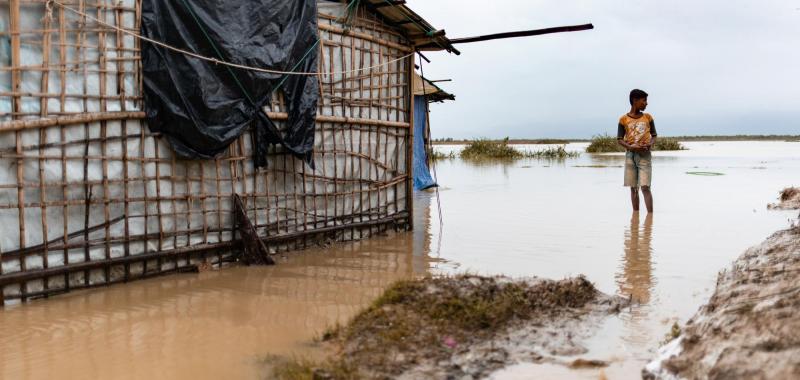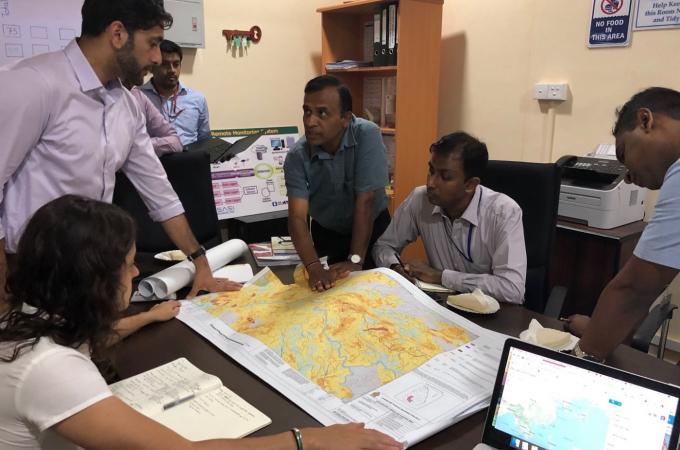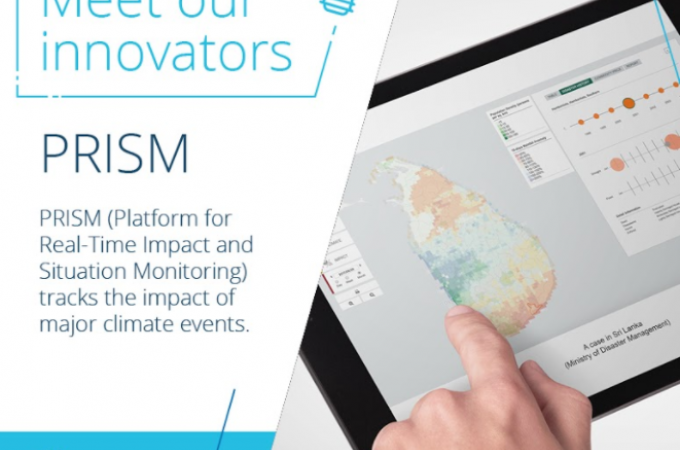Access to the latest data and information on climate hazards and vulnerable people is critical for decision-makers to mitigate risks. However, access and the capacity to use this information is challenging as expertise in remote sensing is not widespread and data on vulnerability is difficult to obtain promptly. This leaves decision-makers with information that comes too late, does not capture the full breadth of a risk analysis or needs to be communicated effectively to ensure its utilization.
Project overview
PRISM is a climate risk monitoring system that integrates geospatial data on hazards such as droughts, floods, tropical storms, and earthquakes, along with information on socioeconomic vulnerability, to inform disaster risk reduction and social assistance programmes.
PRISM enables WFP’s partners in government and WFP country offices to access the latest available climate hazard information alongside vulnerability data through an intuitive, map-based dashboard. PRISM combines information from satellites and other remote sensing sources with WFP data on vulnerability to create actionable climate information for decision-makers, allowing them to prioritize assistance to those most in need.
PRISM is designed to improve the utilization of available data but is not fully accessible to decision-makers, particularly in low and middle-income countries. This is especially true of Earth Observation data which typically requires specialized skills and technology infrastructure to make it useful for practitioners. PRISM is open-source software developed by WFP since 2016 but with a significant technology overhaul in 2020. Though WFP leads the project as open-source software, it is open for collaboration and use by anyone. The Digital Public Goods Alliance has recognized PRISM as a digital public good which is defined as open- source software, open data, open AI models, open standards and open content that adhere to privacy and other applicable laws and best practices, do no harm by design, and help attain the Sustainable Development Goals.
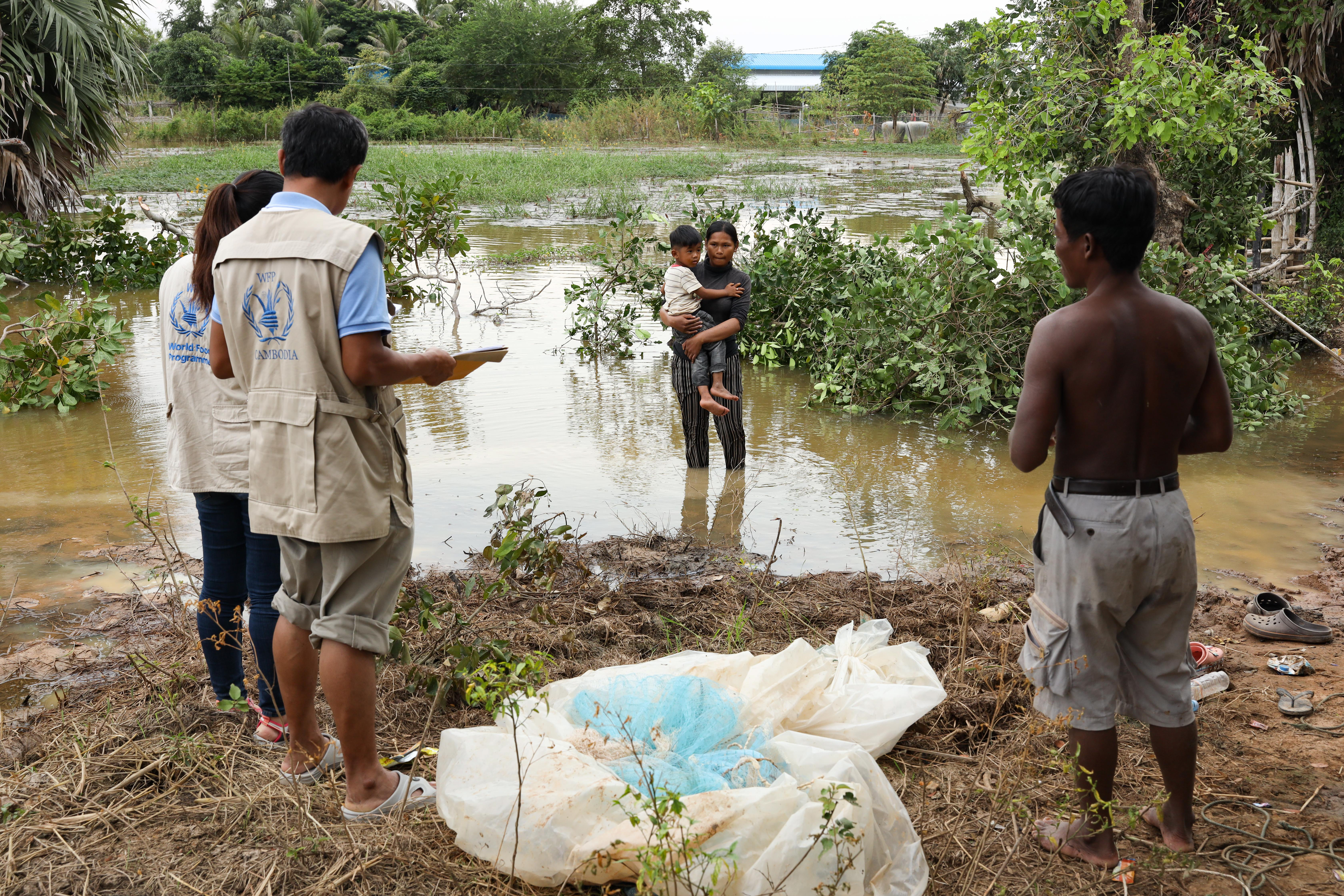
PRISM aims to empower governments with data and information on climate risk to support risk-informed decision-making. The platform provides tools to understand where to direct resources to reach populations most in need of protection and assistance. PRISM brings together national disaster management organizations, national hydro-meteorological services and key line ministries such as agriculture, health, and social welfare to collectively monitor risks, prioritize responses and inform programmes and policies. Increasingly, WFP has focused on deploying PRISM in cooperation with national weather/meteorological offices to monitor climate risk and to share data from ground observations as well as value-added weather and climate information to users of climate and weather data across government agencies and the broader public
The system is actively used by government partners in Indonesia, Sri Lanka, Mongolia, and Cambodia, while several deployments across Asia and Africa are forthcoming. Beyond government partners, WFP also shares information from PRISM with its humanitarian and development partners – providing key data and information to a wide audience.
PRISM visualizes data generated through Earth Observation, including satellites and sensors on the ground. This includes measurements of vegetation conditions, levels of precipitation, and temperatures. Beyond monitoring current conditions, PRISM also displays information on how much they deviate from normal conditions during the same time of year.
The primary outputs of PRISM are interactive maps and charts, along with tables and reports. The system can generate climate risk monitoring indicators and risk and impact analytical products adapted for each hazard and the populations at risk to them.
The indicators of hazards — including droughts and floods — can be monitored over time through intuitive and interactive maps. Charts and related tables help to quantify the extent of a hazard by administrative areas, such as provinces and districts. In addition, PRISM can automatically produce risk and impact indicators based on known vulnerabilities and exposure to hazards at any time. The information can be exported from the system for further analysis and reporting.
PRISM is closely related to the forthcoming deployment of WFP’s global instance of the Open Data Cube platform, the Humanitarian Data Cube. The Humanitarian Data Cube provides climate monitoring data across more than 80 countries globally and is easily integrated into PRISM deployments. PRISM has also been configured to integrate data from other Open Data Cube deployments – providing a quick tool to display time-series climate data in an interactive dashboard. PRISM also integrates data from WFP’s related system – ADAM (Automatic Disaster Analysis & Mapping) which provides near real-time data on earthquakes, tropical storms, and soon floods.
Recently, the project has completed the integration of data collected on mobile devices using KoBo Toolbox – a free and open-source field data collection tool developed by the Harvard Humanitarian Initiative with wide adoption across the humanitarian and development sectors. This allows users to visualize data collected from impacted areas in real-time alongside the hazard information automatically generated by the platform.
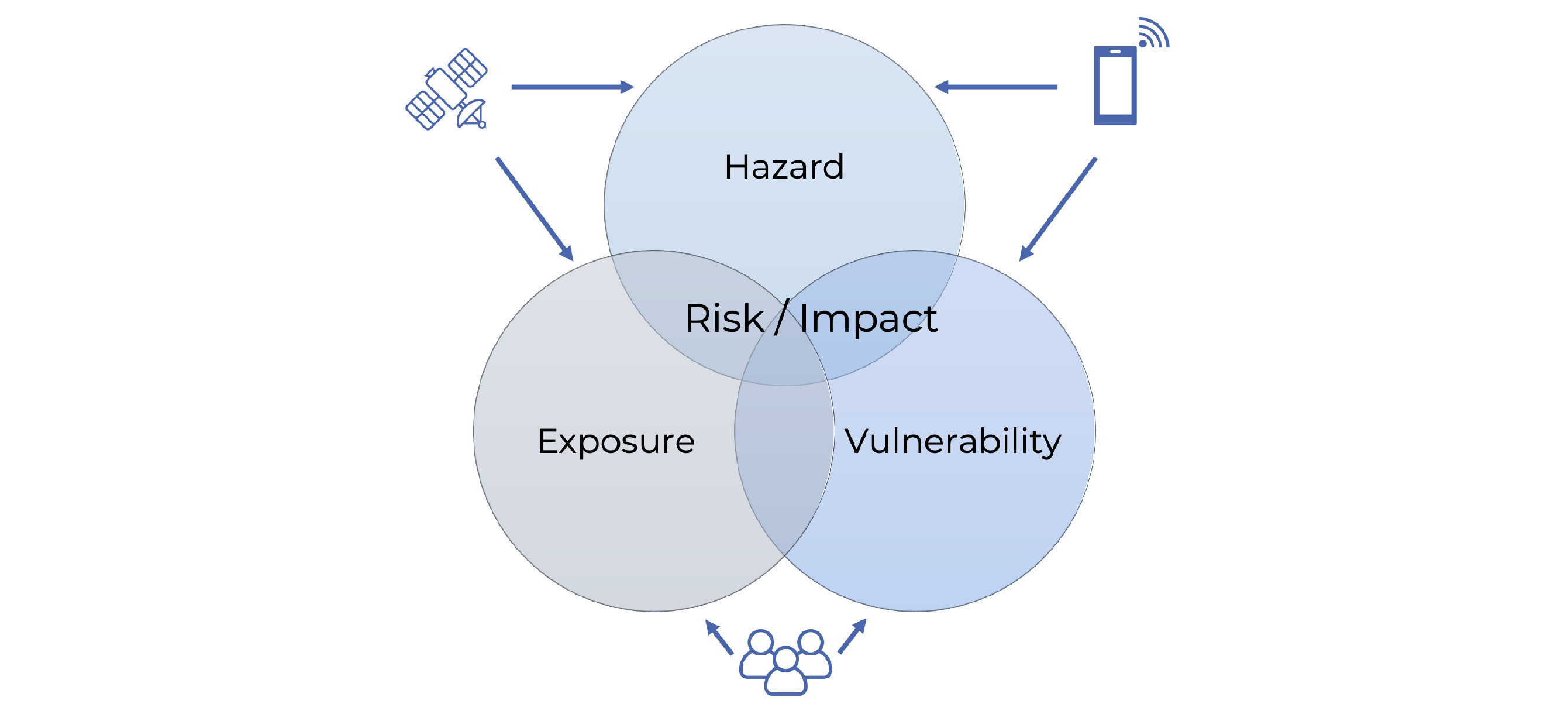
PRISM mitigates the impact of climate-driven hazards by presenting decision-makers with the most up-to-date risk and impact analytics available. This information feeds into several program areas, including climate risk monitoring and climate-informed decision-making in the agriculture sector, disaster preparedness, disaster response, disaster recovery, and adaptive social protection — also referred to as shock-responsive social protection (SRSP).
In the case of slow-onset disasters like droughts, PRISM provides decision-makers with an overview of current conditions and how they differ from long-term averages. It combines this information with data on vulnerable groups. This can then be used to highlight areas at risk and to inform potential early actions to mitigate the impact of a disaster. For example, areas with drier than usual conditions in the critical planting season can be identified, and locations prioritized based on the presence of farmers with low resilience to climate shocks to plan timely interventions.
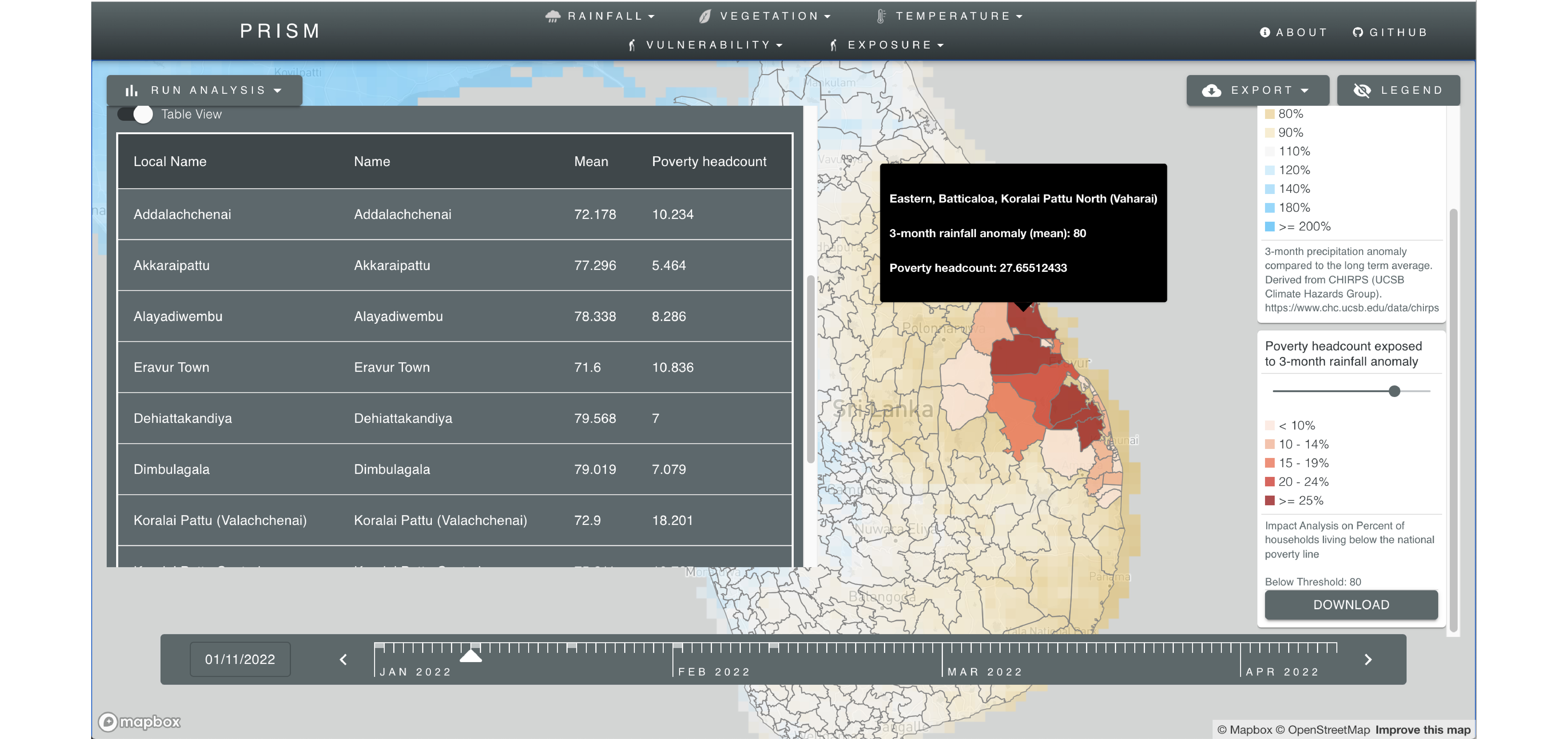
When an acute disaster strikes, such as a tropical storm (cyclones, typhoons, hurricanes), PRISM can rapidly produce statistics on the number of people potentially exposed to damaging wind speeds. This quick estimate helps governments and humanitarian partners immediately assess the scale of the disaster without deploying people on the ground, which can be used for initial response planning and humanitarian assistance if required.
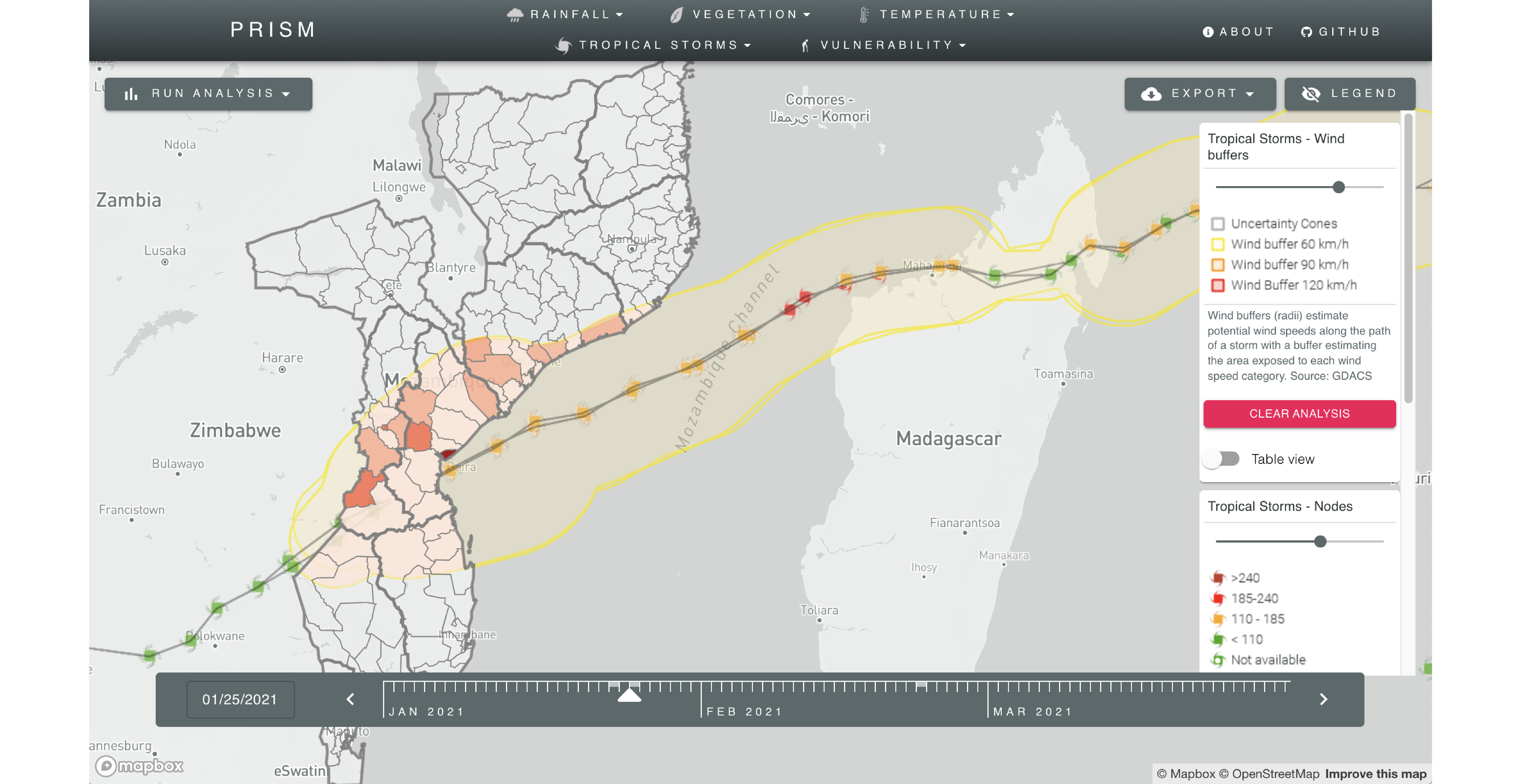
As a tool for governments, PRISM is increasingly being linked to social protection systems which provide aid to those most in need throughout the year. However, when a disaster strikes, social protection systems can be scaled up to expand coverage to new households and/or increase the level of assistance to households already receiving. Thresholds are established and monitored to establish when and to what extent natural hazards should trigger these increases. PRISM can facilitate these triggers through its alert system, where users can create a threshold to monitor for a hazard in a given location. When the threshold is exceeded, a message is sent to the user to take further action.
PRISM will strengthen its delivery of impactful tools for WFP’s partners in government through open-source technology that reduces barriers to access and use of climate risk information. This includes improved capabilities to integrate national weather data, easier access to climate trend analysis, more robust analytics, and an operational framework to facilitate anticipatory actions through climate-derived triggers and thresholds.
We plan to create more streamlined tools to integrate local data and to blend it with satellite observations which creates more national ownership and trust in weather monitoring data that takes advantage of satellites.
PRISM will also improve its ability to visualize and analyze climate indicators over time. The ability to work with time-series data on climate indicators is often impeded by technical challenges. PRISM aims to simplify access to time-series data, to facilitate more in-depth risk analysis and more data driven approaches to policy and national planning for climate resilience.
Looking towards Anticipatory Actions, PRISM’s current capability to monitor climate risks and generate alerts based on user-driven choices on thresholds will be improved. This feature helps to facilitate actions that are customized to local contexts, which are based on triggers and thresholds applied to monitoring data. PRISM will soon support additional types of indicators for monitoring and provide more flexibility for users to create thresholds based on their needs. In addition, the outputs from the triggers will be enhanced to include automated reports. Though not currently implemented, the integration of weather forecast products is also being explored through technical cooperation with scientific partners.
Finally, PRISM continues to optimize features and the user experience through user research and agile software development practices. We invite collaborators with expertise in these areas to contribute to the project.
Meet the team








